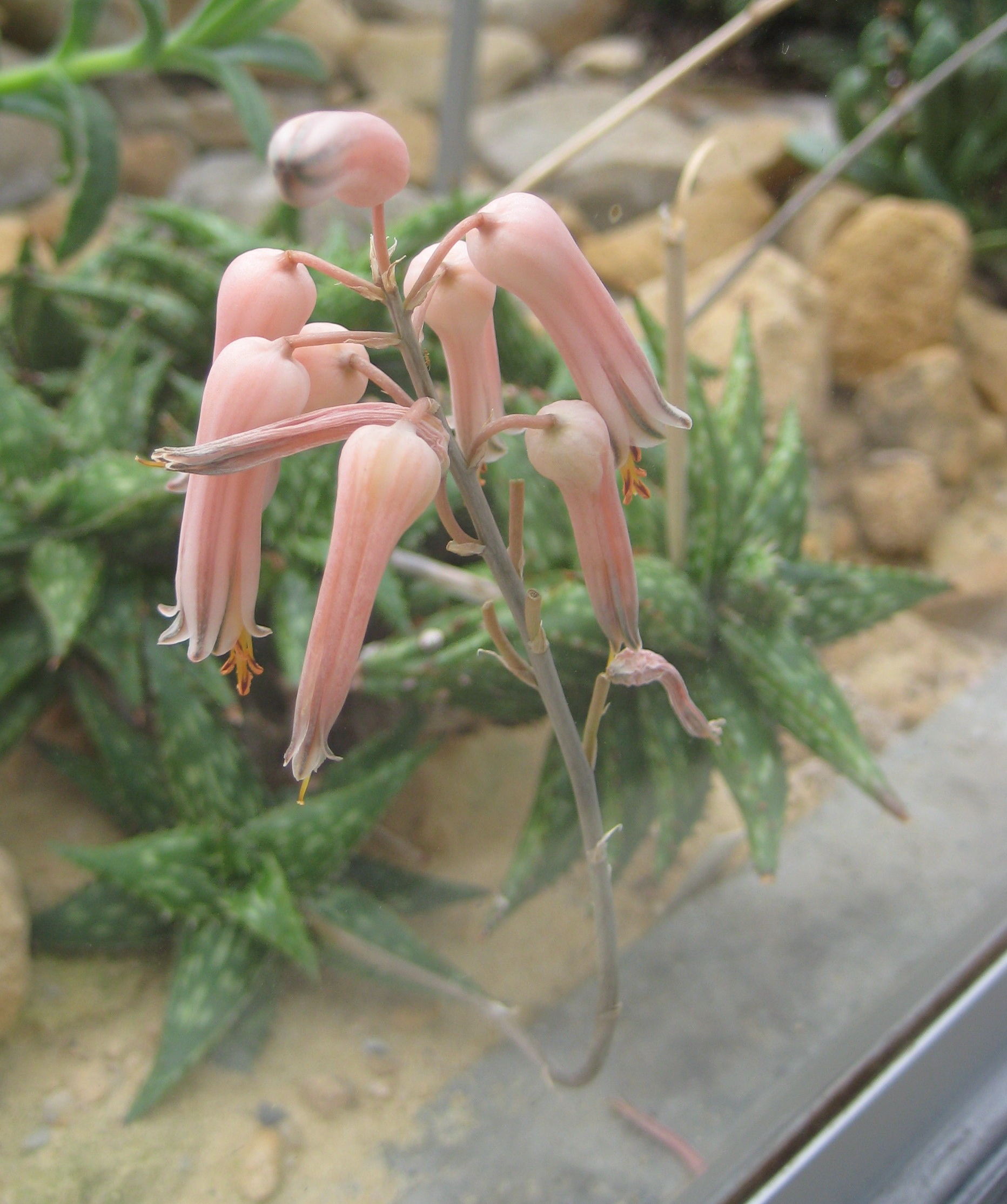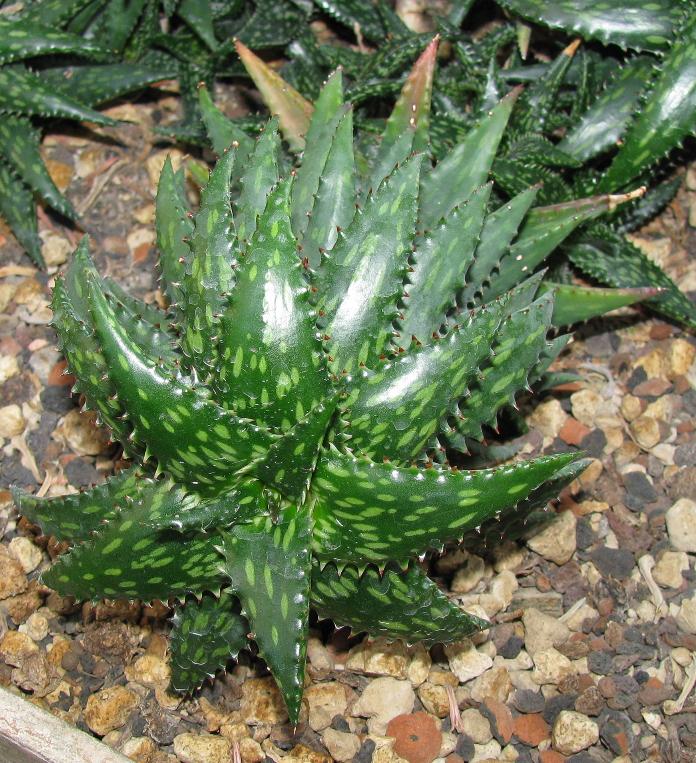Aloe Jucunda on:
[Wikipedia]
[Google]
[Amazon]
''Aloe jucunda'' is a species of

 ''Aloe jucunda'' can reach a height of about 35 cm. It has shiny, glossy, triangular, dark green leaves, usually about twelve, flecked with pale green spots, up to 4 cm long and 2–5 cm wide, with triangular teeth on the margins.
The inflorescences are single cylindrical clusters, about 35 cm high. The flowers are pale pink or coral pink, 20–30 mm.
''Aloe jucunda'' can reach a height of about 35 cm. It has shiny, glossy, triangular, dark green leaves, usually about twelve, flecked with pale green spots, up to 4 cm long and 2–5 cm wide, with triangular teeth on the margins.
The inflorescences are single cylindrical clusters, about 35 cm high. The flowers are pale pink or coral pink, 20–30 mm.
Catalogue of LifeRoyal Botanical Gardens of Kew
jucunda Flora of Somalia {{Asphodelaceae-stub
succulent
In botany, succulent plants, also known as succulents, are plants with parts that are thickened, fleshy, and engorged, usually to retain water in arid climates or soil conditions. The word ''succulent'' comes from the Latin word ''sucus'', meani ...
plants that belong to the family Asphodelaceae
Asphodelaceae is a family of flowering plants in the order Asparagales. Such a family has been recognized by most taxonomists, but the circumscription has varied widely. In its current circumscription in the APG IV system, it includes about 4 ...
, indigenous to Somalia
Somalia, officially the Federal Republic of Somalia, is the easternmost country in continental Africa. The country is located in the Horn of Africa and is bordered by Ethiopia to the west, Djibouti to the northwest, Kenya to the southwest, th ...
.
Description

Distribution and habitat
This species is native to northern Somalia. ''A. jucunda'' occurs only in dry forests on limestone at altitudes from 1060 to 1680 meters, within a very restricted range about 30 km across the Gaan Libah plateau.Conservation
Due to its narrow range, occurrence in only three locations, and the continuing degradation of its habitat, ''A. jucunda'' is currently classified ascritically endangered
An IUCN Red List critically endangered (CR or sometimes CE) species is one that has been categorized by the International Union for Conservation of Nature as facing an extremely high risk of extinction in the wild. As of December 2023, of t ...
by the IUCN
The International Union for Conservation of Nature (IUCN) is an international organization working in the field of nature conservation and sustainable use of natural resources. Founded in 1948, IUCN has become the global authority on the status ...
.
Uses
In its native range, it is used to treat wounds, burns, and digestive problems, as well as being used as adiuretic
A diuretic () is any substance that promotes diuresis, the increased production of urine. This includes forced diuresis. A diuretic tablet is sometimes colloquially called a water tablet. There are several categories of diuretics. All diuretics ...
.
In cultivation, it prefers soil with a pH of 5.5–6.5, and may be grown outside in the US in hardiness zone
A hardiness zone is a geographic area defined as having a certain average annual minimum temperature, a factor relevant to the survival of many plants. In some systems other statistics are included in the calculations. The original and most widely ...
11.
References
Catalogue of Life
jucunda Flora of Somalia {{Asphodelaceae-stub